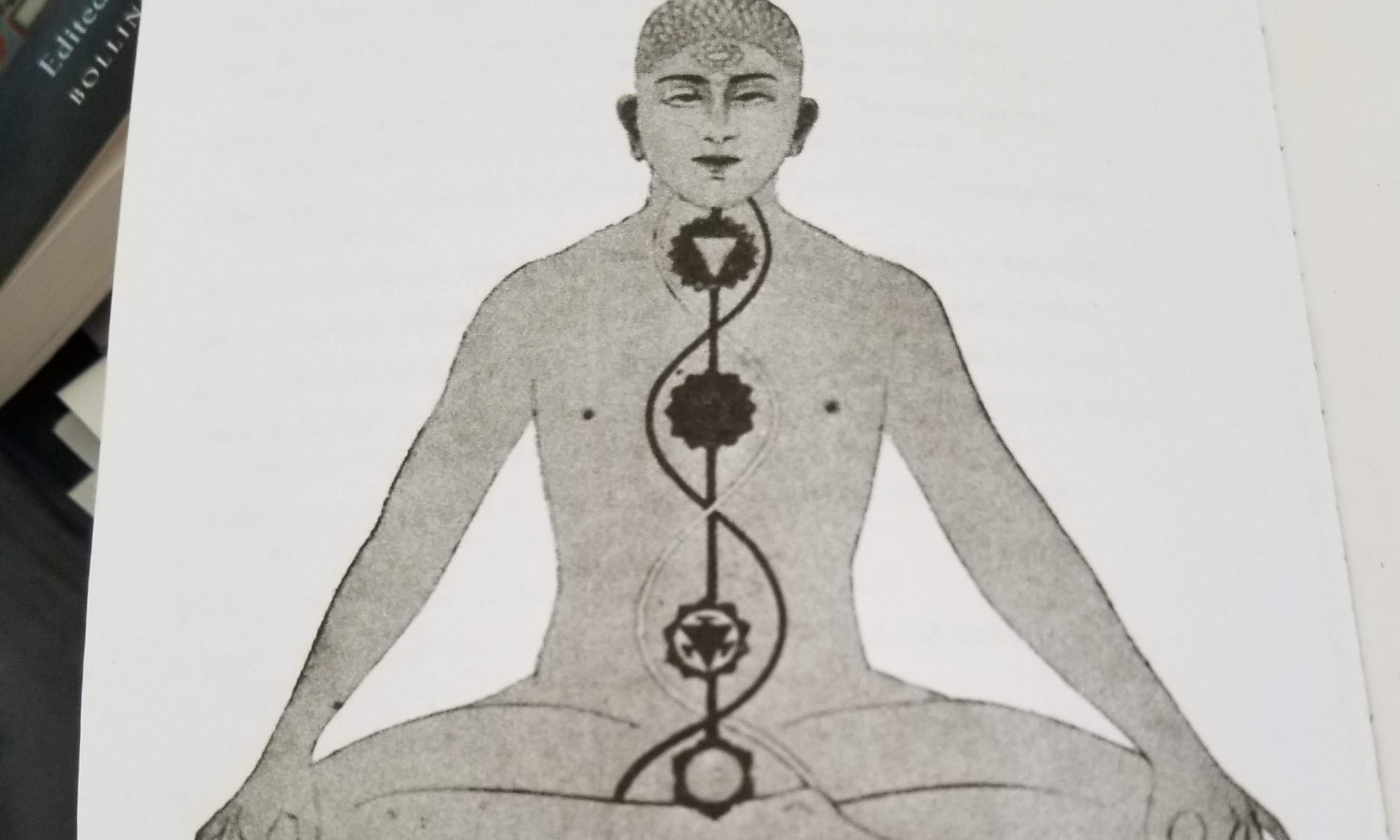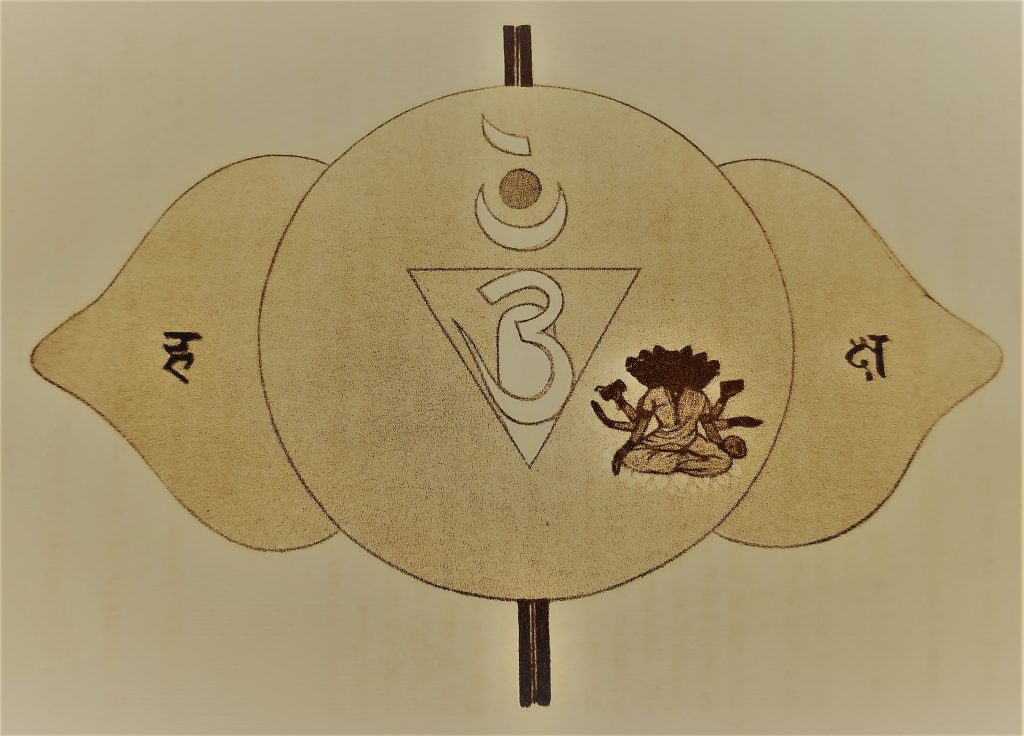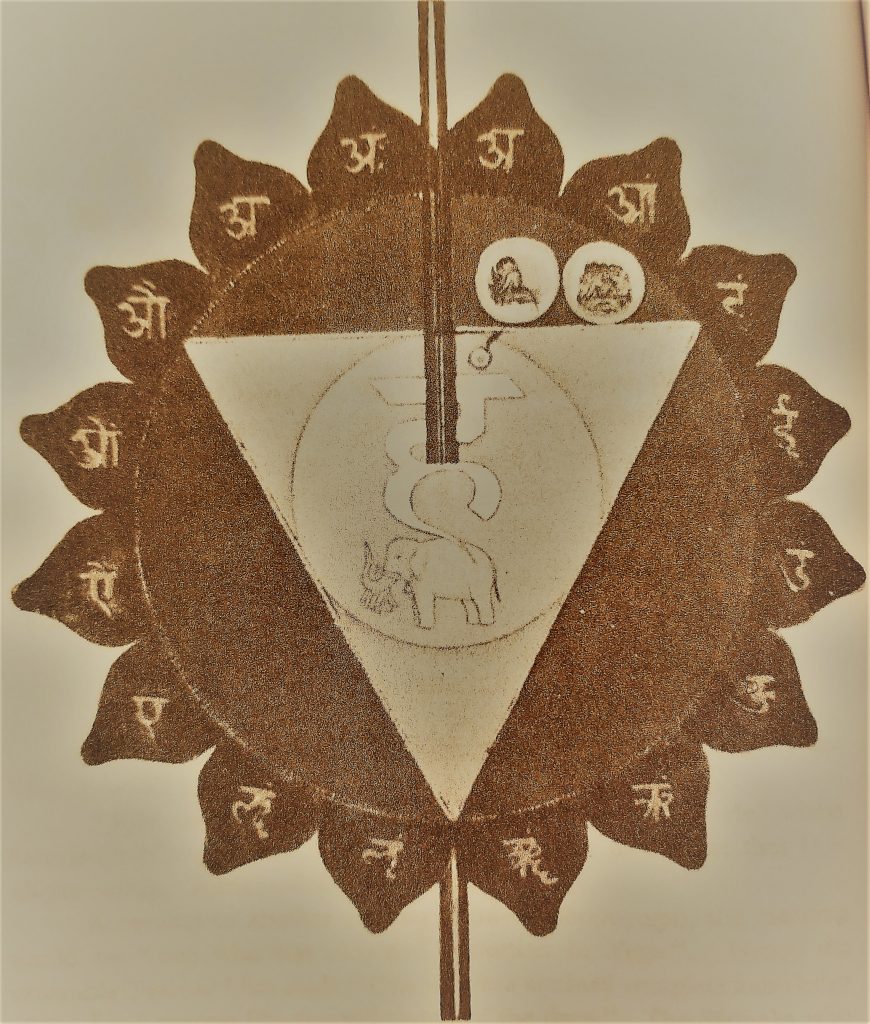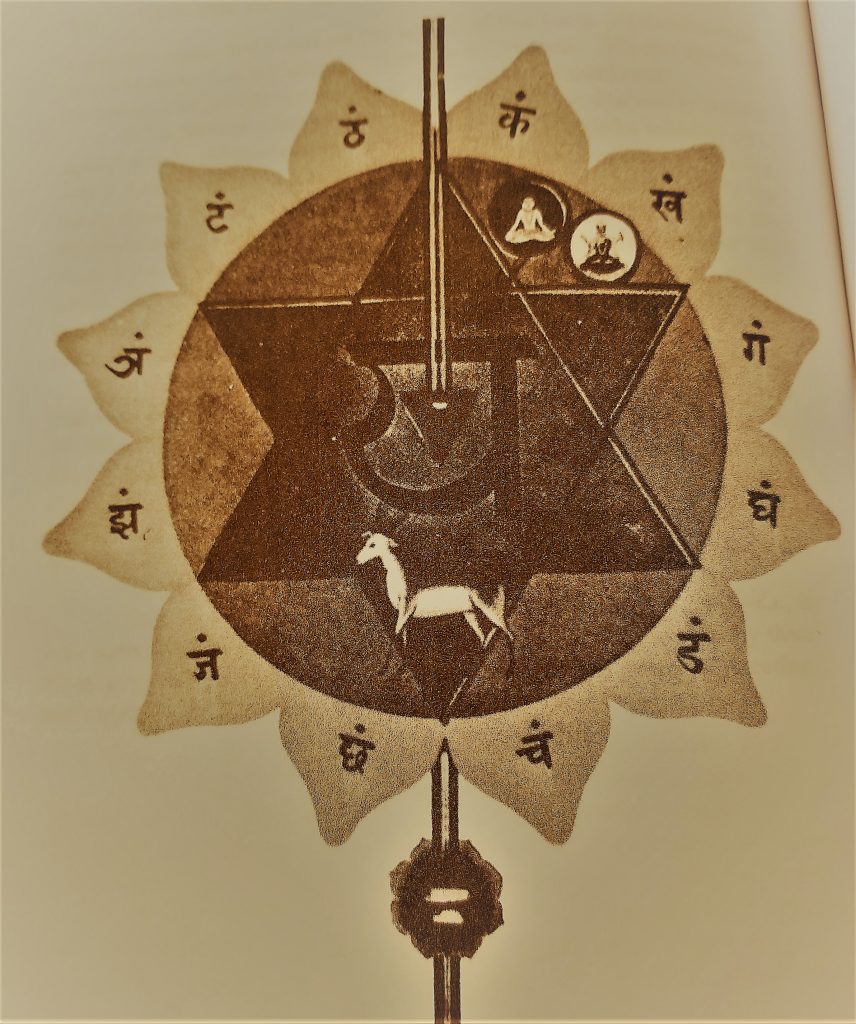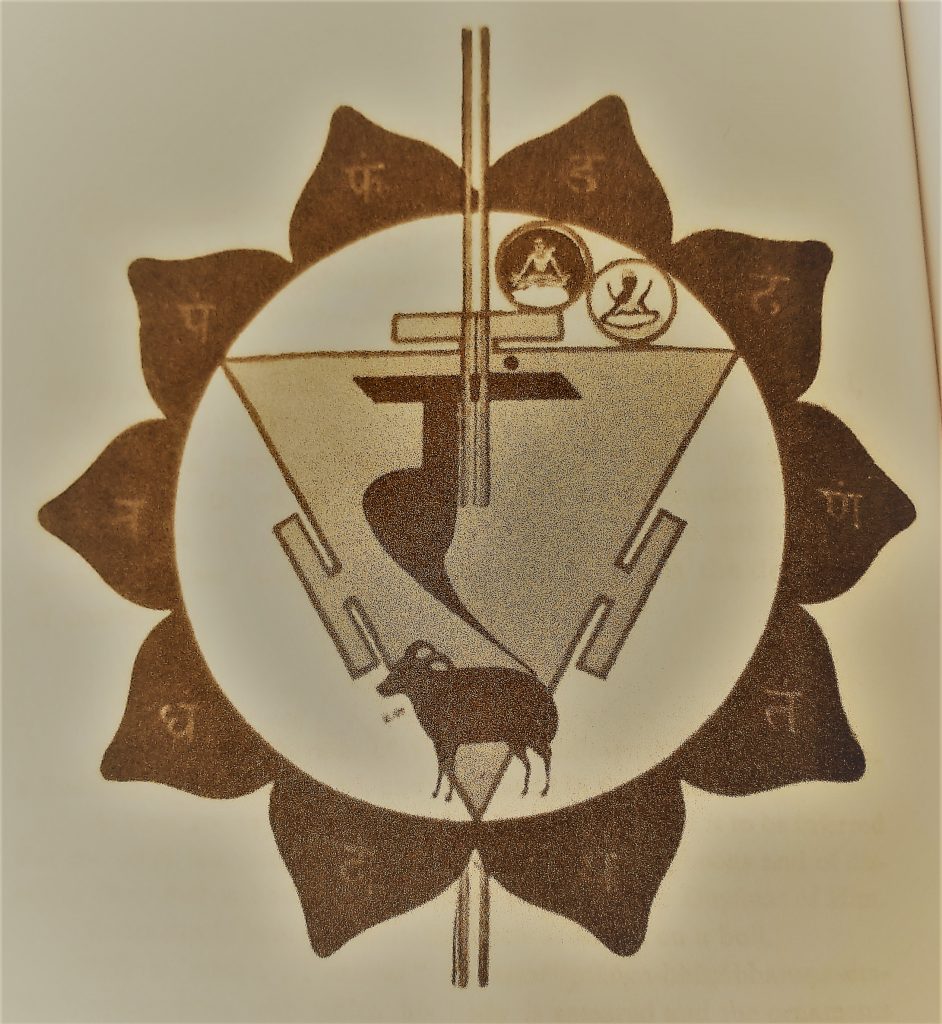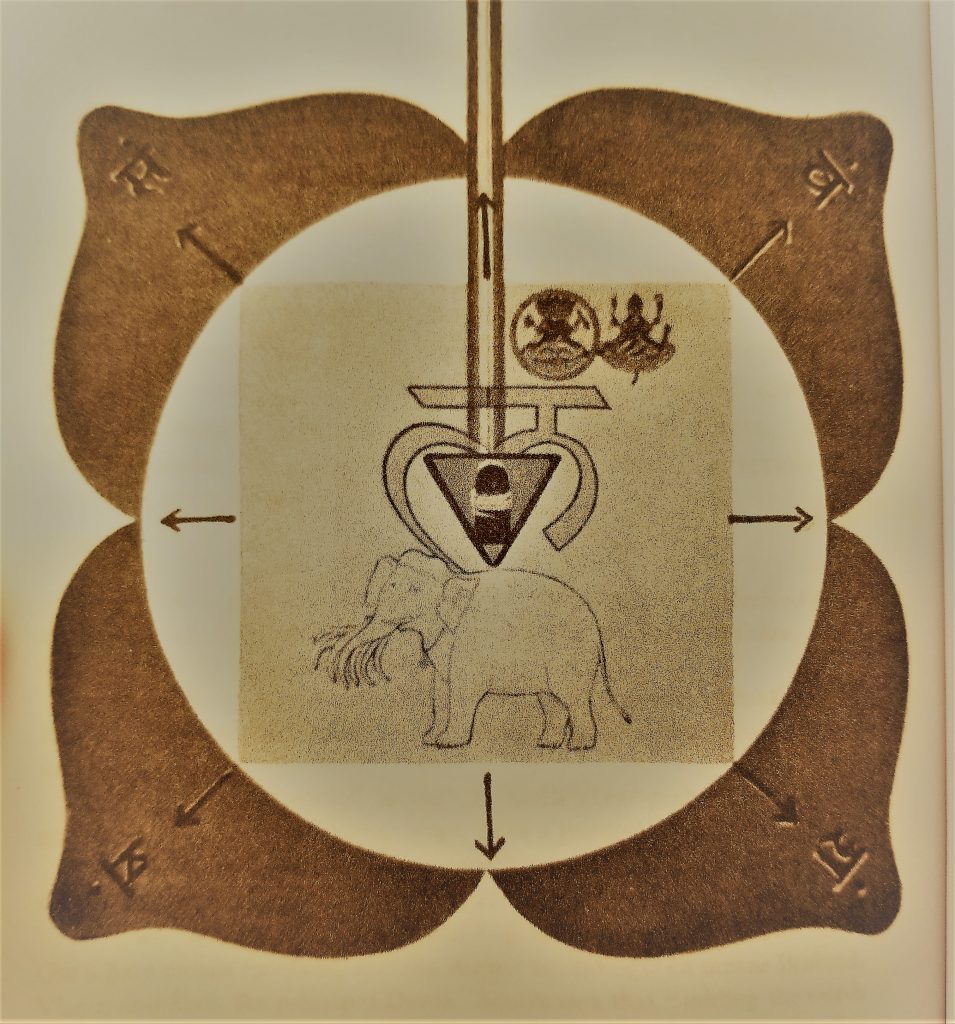“Here is the supreme sixteenth kala of the moon. She is pure and resembles the young sun. She is as fine a thing as the hundredth part of a fiber in the stalk of a lotus. She is lustrous and soft like ten million lightning flashes and is down turned. From her, whose source is the brahman, flows copiously the continuous stream of nectar.”
Description of the Six Centres, Verse 46
Sahasrara – the crown chakra
We have been talking about the chakras based on the ancient, Tantric text, Description of the Six Centres. We have covered the six: muladhara, svadhisthana, manipura, anahata, visuddha, and ajna. Last week, I indicated that ajna is the highest corporeal center. So, what’s the deal with sahasrara?
Sahasrara is described as being located above the crown of the head, belonging to the plane of transcendence. This is the terminus of Kundalini’s journey, when the energy of our lower chakras has allowed her to rise to the point at which she connects us to the divine consciousness of the universe.
When sahasrara is activated, the illusion of the individual dissolves. In this state there is no activity of the mind, no subject or object. The element of sahasrara is “adi tattva,” “adi” meaning “without beginning,” and “tattva” meaning “thatness” or “reality.” Here is only purity, clarity, light, love, and truth.
The sahasrara mandala possesses no special color or quality, its light contains all color vibrations united in pure light. It is described as a lotus flower with 1,000 petals arranged in 20 layers of 50 petals each.
Jung was not particularly interested in sahasrara. To him this chakra was a philosophical construct, the ineffability of which put it beyond any psychological application. He saw it as the logical conclusion of preceding chakras, but without practical value from an analytical psychology perspective.
Chakra Wrap-Up
Do you remember when we were just getting started on this topic, I said that there seemed to be something in the air as far as this was a subject that a lot of people were interested in right now? Maybe that has to do with the universality of the fundamental ideas of this concept?
Not to get all Jungian about it, but individuation and the sublimation of ego seems to be very strong in the collective unconscious at this time. I keep running into the concept in lots of different places. For example, I just read a book by Michael Pollan called, How to Change Your Mind (stay tuned, book review coming up shortly) about psychedelics as a tool to transcend ego. I also found myself listening to a podcast about meditation and when I stripped away all the jargon, the bottom-line objective of the various styles of Buddhist meditation practice (as I understood it) was to remove the ego from acting as a filter on the practitioner’s perception. When the guy talking finally got to the point, what I heard sounded a lot like what we covered in anahata, visuddha, and ajna.
The bottom line for me is that the chakras are one way of describing some sort of fundamental desire for cultivating a sense of what I would call inner peace and well-being. Kundalini yoga, the various types of Buddhist meditation, psychedelic therapy, or Jungian analysis are all just a few of the different paths that someone can take if they are interested in going on that sort of journey.
Thanks for sticking with me through this little adventure. I’d really love to know what you thought about the chakra series. Were there any big questions that popped up for you? Anything that you think that I could have explained better or that you would have liked me to spend some more time on? Anything that didn’t make sense or that you think that I really got wrong?

